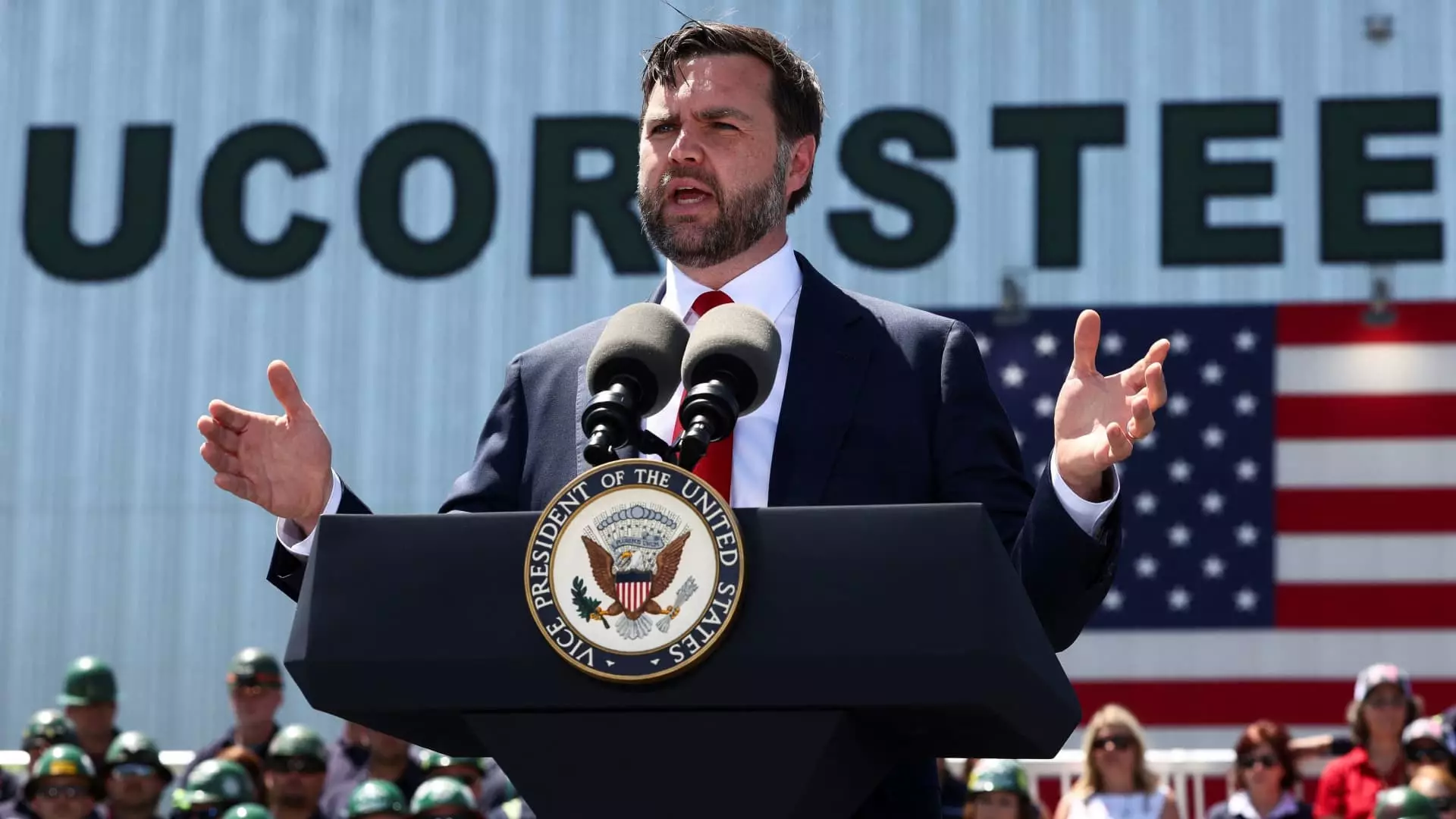In a political climate steeped in contention, the alliance between President Donald Trump and Vice President JD Vance against the Federal Reserve’s monetary policy is not just a tactical maneuver—it is an alarming display of economic irresponsibility. The duo is echoing a seductive call for lower interest rates, framing it as a solution to economic woes. However, beneath the surface, this strategy not only threatens the integrity of our financial system but also risks perpetuating a cycle of instability that could trap our economy in a state of perpetual inflation.
The recent social media outburst from Vance, labeling the Fed’s resistance to rate cuts as “monetary malpractice,” is indicative of a concerning trend where populist rhetoric trumps economic prudence. The Bureau of Labor Statistics report might indicate a slight increase in the consumer price index, but the call for drastic changes to monetary policy based on these figures is not just premature; it is reckless. Inflation figures hovering around 2.4% and 2.8%—above the Fed’s target—should serve as a warning rather than a pretext for slashing rates. Vance and Trump seem to ignore the long-term consequences in favor of short-term political gains.
The Misguided Focus on Tariffs and Inflation
Trump’s desire for a bold one-percentage-point rate cut is not merely an economic proposal; it is a calculated political gamble. His administration continues to assert that the impact of tariffs has been minimal—a narrative that may soon crumble under close scrutiny. The idea that easing monetary policy will forge a path to economic recovery overlooks the longer-term effects of internal and external pressures, particularly those introduced by trade wars. The simplistic notion that lower rates will resolve inflation neglects the reality that inflation is often driven by factors that rates alone cannot control, such as supply chain disruptions and rising global energy prices.
Furthermore, the political pressure on the Fed from both Trump and Vance, especially during such precarious times, adds another layer of complexity. They are leaning on the institution to undermine its credibility. Instead of allowing the Fed to operate independently, their approach threatens to compromise the delicate balance required for stable economic policy. Elyse Ausenbaugh’s warning about the Fed’s potential hesitation to act “too early” underscores the precarious nature of the situation, suggesting that a rate cut driven by political pressure might trigger unintended consequences.
The Consequences of Ignoring Economic Fundamentals
The administration’s insistence on altering monetary policy based on fluctuating inflation numbers reveals a fundamental misunderstanding of economic principles. A responsible leader must recognize the importance of maintaining credibility in financial institutions and the broader markets. The markets currently demonstrate skepticism regarding any imminent rate cuts, and they rightly should be cautious. This skepticism stems from a historical understanding that reckless monetary policy—like the kind being pushed by Trump and Vance—can lead to financial calamities.
In an era where economic decisions should be grounded in empirical data and long-term strategy, resorting to populist demands for immediate changes is not just shortsighted; it is a path fraught with danger. The implications of such political maneuvering could have lasting repercussions, leading not only to economic instability but also to a further erosion of trust in vital institutions. Rather than take bold risks that threaten financial integrity, it is time for the administration to embrace a more principled approach to fiscal policy that aligns with sound economic wisdom.

